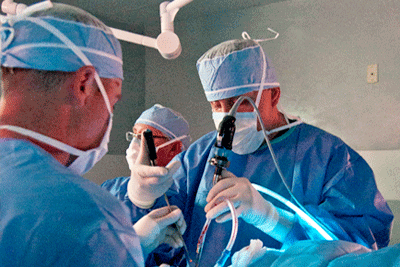Ankylosing Spondylitis is a form of arthritis that primarily affects the spine. It is characterized by early sacroiliac joint pain followed by hardening of the outer wall of the spinal disc and surrounding connective tissue along with arthritic changes in the facet joints. The most recent data available shows that about 2.7 million Americans may have Ankylosing Spondylitis.
Many medical organizations state that Ankylosing Spondylitis has no known specific cause and no specific cure. Even the Mayo Clinic reports that: “There is no cure for Ankylosing Spondylitis, but some treatments relieve symptoms of the disorder and may possibly prevent its progression”.
The disease may cause the spine to gradually lose flexibility and stiffen. It causes inflammation of the spinal joints (vertebrae) that can lead to severe, chronic pain and discomfort. In the most advanced cases this inflammation can lead to new bone formation on the spine, causing the spine to fuse in a fixed, immobile position, sometimes creating a forward-stooped posture. This forward curvature of the spine is called kyphosis.
The hallmark feature of Ankylosing Spondylitis is the involvement in the pain of the sacroiliac joints during the progression of the disease. The sacroiliac joints are the joints at the base of the spine, where the spine joins the pelvis. The most common early symptoms of Ankylosing Spondylitis include:
- Pain and stiffness. Constant pain and stiffness in the low back, buttocks, and hips that continue for more than three months.
- Bony fusion. Ankylosing Spondylitis can cause an overgrowth of the bones, which may lead to bone spurs and abnormal joining of bones, called “bony fusion.”
- Pain in ligaments and tendons. Ankylosing Spondylitis also may affect some of the ligaments and tendons that attach to the bones. These are situations where surgery for Ankylosing Spondylitis is advised.
The surgeons at The Bonati Spine Institute see a relationship between Ankylosing Spondylitis and Lumbar Spinal Stenosis. The most common cause of Spinal Stenosis is degenerative changes in the spinal discs as we get older. These changes include thickening of soft tissues, development of bone spurs, and the gradual breakdown of spinal discs and joints. Any of these conditions can narrow the spinal canal. These age-related changes often happen when a patient has certain disorders such as Ankylosing Spondylitis.
Severe, impairing Stenosis of the lumbar spine should be treated with surgery. Surgical treatment revolves around an effective procedure used to treat the pain caused by Ankylosing Spondylitis known as decompression. Procedures, such as laminectomies, can decompress the spinal canal and associated nerves. A laminectomy can be performed to relieve pressure on the nerve roots. This surgical procedure involves removing part of the vertebra bone called the lamina in order to access the disk. This minimally invasive technique requires a small incision in the back, where the muscles are pushed aside rather than cut. A laminectomy is sometimes called a “de-roofing” procedure because the overlying lamina (the “roof”) of the spinal canal is removed. The idea is to give the contents of the spinal canal and the dural sac more room, thus relieving the Stenosis.
The Bonati Spine Institute pioneered exclusive minimally invasive decompression surgeries and laminectomies for the treatment of Spinal Stenosis. These exclusive patented procedures achieve a documented patient success rate of over 98.75% in the treatment of spine conditions such as Spinal Stenosis caused by Ankylosing Spondylitis.

